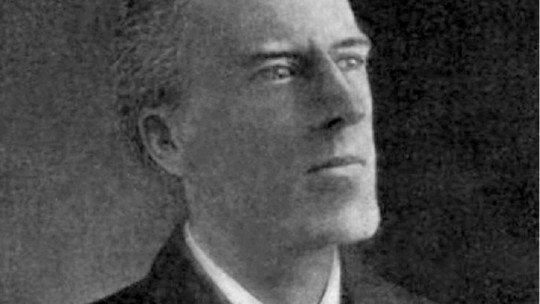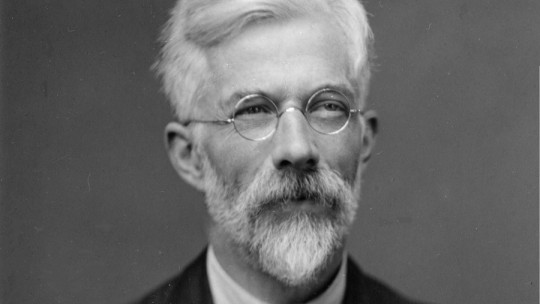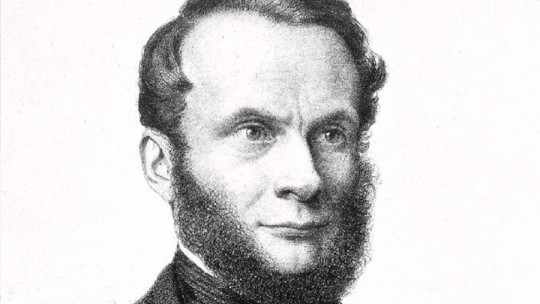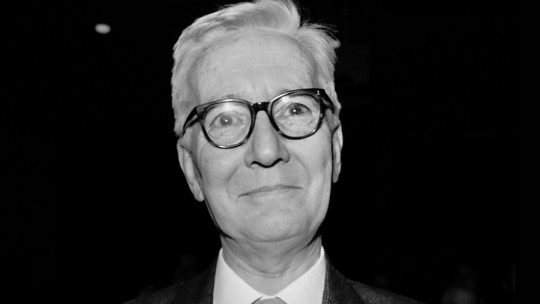Karl Pearson has been one of the most important statesmen, even though he did not originally plan to become one. He actually studied a little bit of everything, ranging from pure sciences, like physics, to biology, studying law and, oddly enough, German history.
We owe him many statistical tools that both psychologists and other workers in health sciences and social sciences use for practically everything, such as chi square or linear correlation.
In this biography of Karl Pearson we will see the life of this great historical figure that, with their light and dark, have determined the history of any discipline that considers itself scientific.
Brief biography of Karl Pearson
Karl Pearson was an English historian, lawyer, mathematician, biometrician, teacher and biographer His interests include writing about folklore, researching philosophy, learning about German culture, and also following socialist theses and greatly admiring Karl Marx. But apart from all this, what stands out most about Pearson was being the contributor to the birth of applied statistics and using it as a fundamental tool in all knowledge that was considered scientific.
Pearson’s contributions to statistics as we know it today are many, the most notable being linear correlation and the χ2 method. Besides, He is considered one of the promoters of incorporating women in science and intellectual debates , knowledge at that time reserved for the male gender. However, he also has controversial aspects such as being a supporter of eugenics influenced by Francis Galton.
Early years and education
He was born Carl Pearson, with a C, on March 27, 1857 in London, England Her family was originally from Yorkshire, upper-middle class and puritanical in tendency. His father was a lawyer, something that perhaps influenced Pearson’s life years later when he decided to study law. Young Pearson was educated in his home until he was nine years old. After that he began studies at the University College School in London until he was sixteen years old.
Due to health problems he had to temporarily stop his training at school, and was assigned a private tutor at home. Despite adversity, he was able to win a scholarship to the prestigious King’s College, University of Cambridge, to study mathematics, which he completed in 1879.
Despite coming from a fairly religious background, at 22 years old Karl He rejected Christianity and adopted freethinking, interpreting it as a kind of faith but not religious Despite being a freethinker, he preferred to distinguish his beliefs from those of traditional freethinkers.
Visit to Germany
After finishing his studies at Cambridge, he traveled to Germany with the intention of studying physics and metaphysics at the University of Heidelberg and also visited the University of Berlin, where he studied law. But he would not only dedicate himself to laws and exact sciences in this period, but also to medieval history and German literature between 1879 and 1880.
In fact, His eagerness and interest in learning about the German Middle Ages made him well known in this field , so much so that some time later he was offered a position studying Germanic studies at the University of Cambridge upon his return to England. One of his works from this period, the result of his passionate interest in Germany, is “The New Werther”, greatly influenced by Johann Wolfgang von Goethe.
It is around this time that, by chance, his original name, Carl, became Karl at the age of 23. The reason is due to a simple typo made at the University of Heidelberg. As the young Karl Pearson was an admirer of Karl Marx, he made this small confusion a hallmark thus acquiring the name Karl, with a German K, for the rest of his life.
Return to England: the Men and Women’s Club
In 1881 he began studying law although he never practiced as a lawyer. Later, in 1885, he obtained a position as professor of mathematics at University College where he gained a reputation as a good although somewhat unorthodox professor. In that period he published “The Common Sense of the Exact Sciences” and “History of the Theory of Elasticity.”
Karl Pearson, Apart from being a great mathematician and man of science, he was interested in ethics and the history of Christianity , in addition to considering that gender should not be an obstacle to discussing intellectual issues. Therefore, in 1885 he founded the Men and Women’s Club, a debate forum whose purpose was to allow free discussion between both genders.
It was at the Men and Women’s Club where he would meet what would become his wife, Maria Sharpe. With Maria he had three children, Sigrid Loetitia, Helga and Egon, and they lived happily until she died in 1928, and the following year Karl Pearson married a colleague from the University of London, Margaret Child.
Pearson, Galton and Welton
It was in 1890, when Karl Pearson was 33 years old, that a very important event occurred in his life, a life in which he had studied mathematics but had not delved into statistics yet. He became interested in statistics thanks to Charles Darwin’s cousin, Francis Galton who a year earlier had published his book “Natural Inheritance”.
In 1891 he became a professor of geometry at Gresham College, where he would establish contact with one of the most important zoologists of the 19th century, Walter Frank Raphael Weldon, founder of biometrics. The relationship between Pearson and Weldon was fruitful, causing Karl to gain knowledge in biometrics and evolutionary theory. Weldon was the one who introduced Pearson to Galton.
Pearson, encouraged by Weldon, became more interested in the mathematics that describes the processes of heredity and evolution and, as a result, published a series of articles on regression analysis, correlation coefficient, as well as introducing the χ2 test (chi or chi square)
The relationship between Galton, Weldon and Pearson was beautiful, resulting in the founding of the magazine Biometrika , whose anecdote behind it is worth commenting on. Pearson presented an article at the Royal Society that, despite being very well worked, was rejected by the Academy’s biologists who did not like the mathematical analysis of it. As a result, Weldon suggested that he create his own magazine and, with the help of Galton, the three founded their own magazine.
Approach to eugenics and recent years
It is here where we begin to see one of the dark sides of Pearson due to the influences of Francis Galton who is considered, by many, the founder of eugenics. Galton put Pearson in charge of his eugenics office and joined his Biometrics Laboratory resulting in the founding of the Department of Applied Statistics at University College.
It should be said that we cannot deny or reject Pearson’s contributions because he is eugenic. At the time, this movement had the support of many scientists and intellectuals, in addition to applying eugenic programs in democratic countries governed by both the right and the left. However, we must not forget that Nazism made very strong use of eugenic theses and social Darwinism defenders of artificial selection in human beings to improve our species.
The admiration for Galton lasted until he died in 1911. His admiration for Galton was such that Pearson even said that Francis Galton and not Charles Darwin would be the most prodigious grandson and that he would be the most remembered of Erasmus Darwin. It was then that Karl Pearson decided to do a biography of Darwin’s cousin.
The work was published in the form of three volumes that came to light in 1914, 1924 and 1930. It used multiple resources as bibliography, including letters, narratives, genealogies, comments and photographs by Francis Galton. This work exalted Galton’s life, his work, and his personal legacy to Pearson. Pearson himself put his money where his mouth was so that these books could be printed.
When Galton died, Karl Pearson left part of his inheritance to the University of London for a research position in eugenics. Honoring his late mentor’s wishes, Pearson incorporated the biometric laboratory and Galton’s laboratory. Karl Pearson would remain in that department until his retirement in 1933, although He continued working on different projects until his death on April 27, 1936 at the age of 79
Works by Karl Pearson
There are several texts, articles and books by Karl Pearson. As a great intellectual of his time, with a multifaceted profile touching both pure sciences and humanities, It is not surprising that his books address mathematics, philosophy, history and religion Below we see a list of some of his works.









